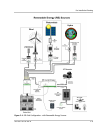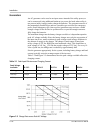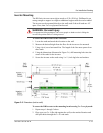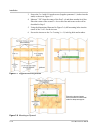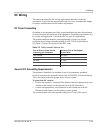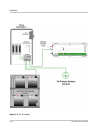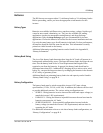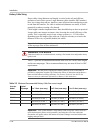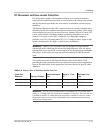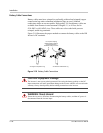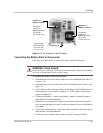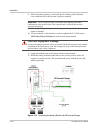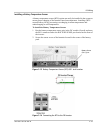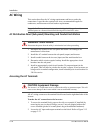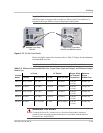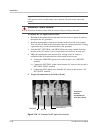
DC Wiring
975-0012-01-02 Rev A 2–17
DC Disconnect and Over-current Protection
For safety and to comply with regulations, battery over-current protection is
required. Fuses and disconnects must be sized to protect the wiring in the system
and are required to open before the wire reaches its maximum current carrying
capability.
The National Electrical Code (NEC) requires both over-current protection and a
disconnect switch for residential and commercial electrical systems. These items
are not supplied as part of the inverter. However, Xantrex offers a DC rated, ETL
Listed, circuit breaker disconnect module specifically designed for use with
Xantrex™ inverters to meet NEC compliance. Two amperage ratings are
available: a DC250 (250 amps) and a DC175 (175 amps) in either single or dual
breaker configurations for single- or dual-inverter installations.
Some installations may not require conduit or a disconnect device, although
over-current protection is still required. Xantrex offers a fuse block (TFB)
providing the code required inverter over-current protection for these applications.
Refer to the table below for the proper size disconnect device for specific cable
diameters.
Important:
Xantrex™ DC disconnects are not designed to accept doubled
(paralleled) cables which may be required for long cable runs. Also, the plastic
red and black covers on the DC inverter inputs are not designed to accommodate
dual cables. If dual cables are used, the optional conduit box (DRCB) must be
used.
Table 2-4
Battery Cable to Maximum Breaker/Fuse Size
Cable Size
Required Rating in Conduit
Maximum Breaker
Size
Rating in “Free
Air”
Maximum Fuse
Size
#2 AWG 115 amps max N/A 170 amps max TFB200
#2/0 AWG 175 amps max DC175 265 amps max TFB300
#4/0 AWG 250 amps max DC250 360 amps max TFB400
Important:
The NEC allows rounding to the next standard fuse size from the cable
rating (i.e., 150 amp cable size rounds up to a standard 175 amp size). The term “free air”
is defined by the NEC as cabling that is not enclosed in a conduit or a raceway. Cables
enclosed in conduit or raceways have substantially lower continuous current carrying
ability due to heating factors.



